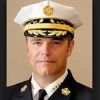As I’ve written on several past occasions, I believe helmet cams, and other types of body- or gear-mounted personal camera systems, can be valuable tools for the fire and emergency services when used properly and respectfully.
Firefighters and EMS personnel have always taken still photographs and video footage of emergency incidents. Those images can be very helpful — imagine this website, fire-EMS training materials, or a conference presentation without real-world illustrations.
But we’ve also seen instances where they were used or disseminated in ways that were disrespectful or violated patients’ privacy. Even though it’s probably a small number of cases compared to the amount of photos and videos out there, misuse creates a problem for fire chiefs, fire departments and all of us who depend on the public trust to do our jobs.
Liability concerns are also frequently cited. While I’m not a legal expert, my sense is that video footage could probably make a case in either direction, for or against a fire department or individual member who is involved in litigation. I also know that some law enforcement agencies are adopting personal video systems as standard equipment for their officers and deputies as a tool for helping to address complaints and make cases.
Clearly there’s a balance between the pros and cons of using personal cameras on fire and emergency incidents. Finding that balance point, for a given situation, is probably not always going to be easy or clear-cut, since transparency and privacy are often competing interests in the public sphere.
What do you think?












